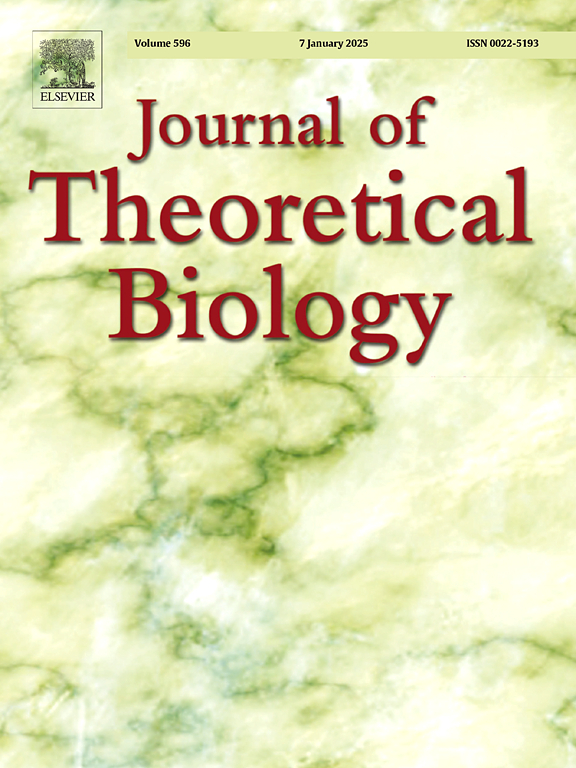Biased tertiary sex ratios enhance the efficacy of sex-ratio distorting genetic techniques to control invasive species
IF 2
4区 数学
Q2 BIOLOGY
引用次数: 0
Abstract
Genetic biocontrol strategies are increasingly being developed and tested for reducing the effects of invasive species, and are highly likely to be an important tool of integrated pest management in the future. Included among such strategies are those that distort the sex ratio of the target species. Models used to forecast the efficacy of such strategies generally assume, implicitly, that the tertiary sex ratio of the target population is 50:50. We present evidence that this assumption is important, and that if the tertiary sex ratio is biased towards females, a sex-distorting construct introduced into the population that produces phenotypic males will become fixed at a level determined by the magnitude of the bias, even after further introductions cease. We show, first using a simple logistic population model, and second using a realistic simulation of an important aquatic invasive species – the sea lamprey Petromyzon marinus – how this effect can greatly increase the effectiveness of a sex-distorting construct at population suppression, but also increase the risk of such strategies due to reduced reversibility. We also present evidence that biased tertiary sex ratios might be present in many invasive species, particularly when their population sizes are low relative to environmental carrying capacity.
偏倚的第三性别比增强了性别比例扭曲基因技术控制入侵物种的有效性
遗传生物防治策略越来越多地被开发和试验,以减少入侵物种的影响,并极有可能成为未来害虫综合治理的重要工具。这些策略中包括那些扭曲目标物种性别比例的策略。用于预测此类策略有效性的模型通常隐含地假设目标人口的第三性别比例为50:50。我们提供的证据表明,这一假设是重要的,如果第三性别比例偏向于女性,那么即使在进一步的引入停止之后,引入种群中产生表型雄性的性别扭曲结构将固定在一个由偏见程度决定的水平上。我们首先使用一个简单的逻辑种群模型,然后使用一个重要的水生入侵物种-海七鳃鳗的现实模拟-这种效应如何极大地提高了性别扭曲结构在种群抑制中的有效性,但也增加了这种策略的风险,因为可逆性降低。我们还提供证据表明,在许多入侵物种中,特别是当它们的种群规模相对于环境承载能力较低时,第三代性别比例可能存在偏差。
本文章由计算机程序翻译,如有差异,请以英文原文为准。
求助全文
约1分钟内获得全文
求助全文
来源期刊
CiteScore
4.20
自引率
5.00%
发文量
218
审稿时长
51 days
期刊介绍:
The Journal of Theoretical Biology is the leading forum for theoretical perspectives that give insight into biological processes. It covers a very wide range of topics and is of interest to biologists in many areas of research, including:
• Brain and Neuroscience
• Cancer Growth and Treatment
• Cell Biology
• Developmental Biology
• Ecology
• Evolution
• Immunology,
• Infectious and non-infectious Diseases,
• Mathematical, Computational, Biophysical and Statistical Modeling
• Microbiology, Molecular Biology, and Biochemistry
• Networks and Complex Systems
• Physiology
• Pharmacodynamics
• Animal Behavior and Game Theory
Acceptable papers are those that bear significant importance on the biology per se being presented, and not on the mathematical analysis. Papers that include some data or experimental material bearing on theory will be considered, including those that contain comparative study, statistical data analysis, mathematical proof, computer simulations, experiments, field observations, or even philosophical arguments, which are all methods to support or reject theoretical ideas. However, there should be a concerted effort to make papers intelligible to biologists in the chosen field.

 求助内容:
求助内容: 应助结果提醒方式:
应助结果提醒方式:


